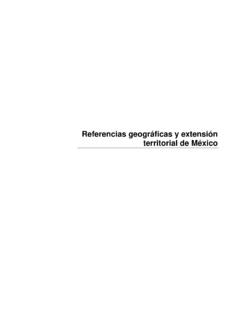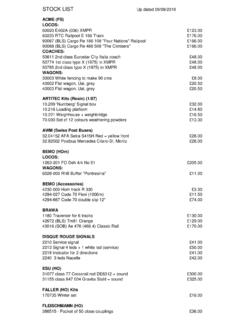Transcription of Michael A. Walsh, P.E. VP Engineering - WPCA
1 Michael A. walsh , EngineeringWET FGD TYPES AND FUNDAMENTALSC opyright 2008 Marsulex Environmental Technologies All rights reserved21. Overview of the WFGD Process1. Overview of the WFGD Process2. Basic Chemistry2. Basic Chemistry3. Typical FGD Processes3. Typical FGD Processes4. Dry FGD vs Wet FGD4. Dry FGD vs Wet FGD5. Summary5. SummaryCopyright 2008 Marsulex Environmental Technologies All rights reserved31. Overview of the WFGD Process1. Overview of the WFGD ProcessCopyright 2008 Marsulex Environmental Technologies All rights reserved4 ReagentsReagentsAll require use of an alkaline chemical reagent Limestone Lime Ammonia SodiumCopyright 2008 Marsulex Environmental Technologies All rights reserved5 ByproductsByproductsAll convert gaseous SO2to either liquid or solid waste by-product Throwaway process Gypsum process Regenerative process Fertilizer product processCopyright 2008 Marsulex Environmental Technologies All rights reserved62.
2 Basic Chemistry2. Basic ChemistryCopyright 2008 Marsulex Environmental Technologies All rights reserved7 Limestone SystemsLimestone Systems1. SO2+ H2OH2SO3 Absorption2. CaCO3+ H2SO3 CaSO3+ CO2+ H2 ONeutralization3. CaSO3+ O2 CaSO4 Oxidation4. CaSO3+ H2 OCaSO3+ H2 OCrystallization5. CaSO4+ taking place in absorber & recycle tank:Copyright 2008 Marsulex Environmental Technologies All rights reserved8 Lime SystemsLime SystemsReactions taking place in absorber & recycle tank are very similar to those in the limestone system. The main chemical differences are:(2) CaO + H2O Ca(OH)2 Slaking(3) H2SO3+ Ca(OH)2 CaSO3+ 2H2 ONeutralizationCopyright 2008 Marsulex Environmental Technologies All rights reserved9 Typical Limestone FGDT ypical Limestone FGDC opyright 2008 Marsulex Environmental Technologies All rights reserved10 Typical Limestone FGDT ypical Limestone FGDC opyright 2008 Marsulex Environmental Technologies All rights reserved11 Ammonia-Based WFGD SystemAmmonia-Based WFGD SystemCopyright 2008 Marsulex Environmental Technologies All rights reserved12 Ammonia WFGD ProcessAmmonia WFGD ProcessSO2+ 2NH3+ H2O (NH4)2SO3(1)(NH4)2SO3+ 1/2 O2(NH4)2SO4(2) For every pound of SO2removed: Need one-half pound Ammonia Produces two pounds of Ammonium Sulfate One pound of Ammonia generates four pounds Ammonium Sulfate4.
3 1 product / feed ratio generatesfavorable economic leverageCopyright 2008 Marsulex Environmental Technologies All rights reserved133. Typical FGD Processes3. Typical FGD ProcessesCopyright 2008 Marsulex Environmental Technologies All rights reserved14 Typical WFGD ProcessesTypical WFGD Processes1. SO2 Outlet Emissions1. SO2 Outlet Emissions2. pH and Stoichiometry2. pH and Stoichiometry3. Liquid-to-Gas Ratio3. Liquid-to-Gas Ratio4. SO2 Inlet Concentration4. SO2 Inlet Concentration5. Residence Time5. Residence Time6. Mist Elimination6. Mist EliminationCopyright 2008 Marsulex Environmental Technologies All rights reserved15SO2 Outlet EmissionsSO2 Outlet Emissions Allowable SO2outlet emissions are based on either maximum outlet level or on overall system SO2removal efficiency Requirements dictated by environmental regulations Depending on requirements, absorbers may be designed to treat all or only a portion of flue gasCopyright 2008 Marsulex Environmental Technologies All rights reserved16pH and StoichiometrypH and Stoichiometry Slurry pH is likely the most important control variable for absorber operation pH determines amount of reagent used pH is related to reagent stoichiometry the number of mols of reagent added per mol of 2008 Marsulex Environmental Technologies All rights reserved17 Liquid-to-Gas RatioLiquid-to-Gas Ratio L/G is the ratio of recycle slurry (in l/hr) to absorber outlet gas flow (m3/hr, actual)
4 The amount of surface system available for reaction with SO2is determined by L/G L/G ratio can be changed by altering either recycle flow rate or flue gas flow rate Liquid flow is typically varied by changing the number of operating recycle pumpsCopyright 2008 Marsulex Environmental Technologies All rights reserved18 Liquid-to-Gas RatioLiquid-to-Gas RatioThe maximum flue gas velocity sets the absorber vessel diametersand impacts the ability of the mist eliminators to prevent droplet 911L/G Ratio [liters /cubic meter]SO2 Removal Efficiency [%] Lim estone Am m onia3 Ope rating Spray Le ve lsConstant Coal Sulfur of w t%Copyright 2008 Marsulex Environmental Technologies All rights reserved19SO2 Inlet ConcentrationSO2 Inlet Concentration At constant operating conditions, increasing the concentration of SO2(increasing the sulfur content of the fuel) will decrease SO2removal Increased SO2concentration causes an increased depletion of liquid phase alkalinity751000123456% Sulfur in the FuelSO2 Removal Efficiency [ %] Lim estone Amm onia3 Ope rating Spray Le ve lsConstant L/G of l/m 3 Copyright 2008 Marsulex Environmental Technologies All rights reserved20 Residence TimeResidence Time Residence time the time that slurry spends in the reaction tank before being recycled for further SO2absorption Residence time allows the liquid to desupersaturate and avoid scaling in lime/limestone systems Typically, for limestone systems, a residence time of 3-5 minutes is providedCopyright 2008 Marsulex Environmental Technologies All rights reserved21 Mist EliminationMist Elimination Important to remove entrained liquid droplets in order to avoid carryover of the liquid into downstream ducts and stack.
5 Good performance of mist eliminators depends on:-Operation of absorber at flue gas velocities below critical velocity at which re-entrainment of mist occurs-Proper washing techniquesCopyright 2008 Marsulex Environmental Technologies All rights reserved22 Mist EliminationMist Elimination0255075100234567 Mist Eliminator Gas Velocity [meters/sec]Outlet Mist Carryover [mg/Nm3]Copyright 2008 Marsulex Environmental Technologies All rights reserved23 Mist EliminationMist Elimination Major parameters to be considered for proper mist eliminator washing include:-Wash water rate-Water quality-Timing sequence-Washing area coverage-Nozzle pressure-Nozzle spray angleCopyright 2008 Marsulex Environmental Technologies All rights reserved244. Major Components4. Major ComponentsCopyright 2008 Marsulex Environmental Technologies All rights reserved25 Absorbers Traditional ReagentsAbsorbers Traditional Reagents1.
6 Spray Absorbers Open Tower1. Spray Absorbers Open Tower2. Tray Towers2. Tray Towers3. Packed Towers3. Packed Towers4. Jet Bubbling Reactors4. Jet Bubbling Reactors6. Wulff Process6. Wulff Process5. Spray Dryers5. Spray DryersCopyright 2008 Marsulex Environmental Technologies All rights reserved26 Spray AbsorbersSpray AbsorbersMist EliminatorsFlue Gas InletFlue Gas OutletMist Eliminator Wash SpraysAbsorption SpraysLiquid LevelSpargerAgitatorRecycle Pumps(3 + 1)Copyright 2008 Marsulex Environmental Technologies All rights reserved27 Isometric of Open Spray TowerIsometric of Open Spray TowerCopyright 2008 Marsulex Environmental Technologies All rights reserved28 Typical Spray PatternTypical Spray PatternCopyright 2008 Marsulex Environmental Technologies All rights reserved29 Tray TowersTray TowersCopyright 2008 Marsulex Environmental Technologies All rights reserved30 Packed TowersPacked Towers Gas enters the base of the tower and passes up through the packing countercurrent to the scrubbing liquor which is introduced at the top of the tower The liquid is dispersed by means of inert.
7 Stationary or molded packings of various shapes and configurations designed to add surface area and thus promote maximum vapor-liquid contactCopyright 2008 Marsulex Environmental Technologies All rights reserved31 Jet Bubbling ReactorJet Bubbling ReactorIn one vessel combines concurrent chemical reactions of: Limestone dissolution SO2absorption Neutralization Sulfite oxidation Gypsum precipitation Gypsum crystal growth Copyright 2008 Marsulex Environmental Technologies All rights reserved32 Jet Bubbling ReactorJet Bubbling ReactorCut-Away of JBRGas Sparger ActionCopyright 2008 Marsulex Environmental Technologies All rights reserved33 Spray Dryer AbsorberSpray Dryer Absorber Rotary atomizer (shown) or dual fluid atomization Lime slurry or lime + recycle reagent ~95% SO2 efficiency practical limit due to stoichiometryAtomizerRemoval MonorailPenthouseInlet GasDistributorAxialEntryVanesAtomizerCop yright 2008 Marsulex Environmental Technologies All rights reserved34 Graf / Wulff Fluidized BedGraf / Wulff Fluidized BedReflux Circulating Fluid Bed TechnologyCopyright 2008 Marsulex Environmental Technologies All rights reserved354.
8 Dry FGD vs. Wet FGD4. Dry FGD vs. Wet FGDC opyright 2008 Marsulex Environmental Technologies All rights reserved36 Dry FGD vs Wet FGDDry FGD vs Wet FGDWETDRYC apital CostHigherLowerReagent CostLowerHigher% SO2 EfficiencyHigh 90'sMid 90's (Spray Dryer Stoichiometry Limits) High-90's (CDS)Water UsageHigherLower (Approx 40% less)Overall Operating $'s (Normalized)LowerHigherCoal % Sulfur preference> 2%<2%By-Product UsagePossibleRareSO3 EmissionsYesNILC opyright 2008 Marsulex Environmental Technologies All rights reserved37 Dry FGD vs Wet FGDDry FGD vs Wet FGDD ecisionDecision % Sulfur in coal is the primary driver Wet FGD can accommodate lower (than design) sulfur coal Dry FGD faces performance limitations with higher (than design)sulfur coal Decisions maybe influenced by site-specific: Permit requirements Delivered cost of reagents Disposition of by-product SO3emission requirements may drive economics to dry FGD in somecases Copyright 2008 Marsulex Environmental Technologies All rights reserved385.
9 Summary5. SummaryCopyright 2008 Marsulex Environmental Technologies All rights reserved39By-product ValuesBy-product Values($US/ton)($US/ton)Gypsum-4 to +4 Sulfuric Acid (100% basis)*60 to 88 Elemental Sulfur*50 to 80 Ammonium Sulfate*110 to 196*Source: Green MarketsCopyright 2008 Marsulex Environmental Technologies All rights reserved40 Lower Colorado River AuthorityLower Colorado River AuthorityFayette Power Project, Units 1, 2 and 3 TexasFuel:PRB Coal% Gas Volume: (acfm)2,548,000 Reagent:LimestoneAbsorber Type:Spray TowerSO2 Removal Efficiency:97%Startup Date:2010 Wet FGD retrofit awarded to MET in 20062x600 MW, Units 1 &22x600 MW, Units 1 &2 Copyright 2008 Marsulex Environmental Technologies All rights reserved41 LCRA Fayette Units 1&2 LCRA Fayette Units 1&2 Wet Limestone FGD for low-sulfur PRB Coal Rules of Thumb do not always dictate decision % SO2efficiency-Existing Wet FGD plant on Unit 3-By-product disposal issues-Reagent can trump the % sulfur in coal in the decision to go WetCopyright 2008 Marsulex Environmental Technologies All rights reserved42US Emissions from Energy Consumption at Conventional PowerPlants & Combined Heat and Power Plants, 1994 through 2005US Emissions from Energy Consumption at Conventional PowerPlants & Combined Heat and Power Plants, 1994 through 2005 Note:These data are for plants with a fossil-fueled steam-electric capacity of 100MW or more.
10 Beginning in 2001, data for plants with combustible renewable steam-electric capacity of 10 MW or more were also included. Data forIndependent Power Producers and Combined Heat and Power Plants are included beginning with 2001 data. Totals may not equal sum of components because of independent : Energy Information Administration, Form EIA-767, Steam-Electric Plant Operation and Design Report Carbon Dioxide (CO2)Sulfur Dioxide (SO2)Nitrogen Oxides(NOx)FGD InstallationsCapacity (MW)20052,513,60910,3403,961248101,64820 042,456,93410,3094,143248101,49220032,41 5,68010,6464,53224699,56720022,395,04810 ,8815,19424398,67320012,389,74511,1745,2 9023697,98820002,429,39411,2975,38019289 ,67519992,326,55912,4445,73219289,666199 82,313,00812,5096,23718687,78319972,223, 34813,5206,32418386,60519962,155,45212,9 066,28218285,84219952,079,76111,8967,885 17884,67719942,063,78814,4727,80116880,6 17










